How to paint a heating radiator: the choice of coloring
Every few years, homeowners have an urgent need to paint heating batteries. In this case, I want to choose a coating that will serve for a long time, without spoiling the attractive appearance of the devices.
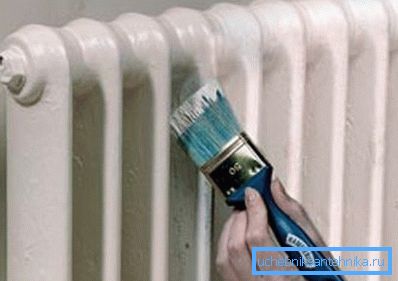
Painting cast iron radiators is needed in such cases:
- repair indoors;
- I want to diversify the interior;
- peeling old cover.
Some aspects of color selection
The color is white the most friendly, while it goes well with all the others. Therefore, according to tradition, the overwhelming majority of radiators are painted in just such a tone.
It is worth remembering that white color hides objects, blurs their contours. Therefore, light heating devices are visually invisible. This is especially valuable if the type of radiator is not very aesthetic.
When the batteries are old and their heat transfer cannot be increased by washing the sections, it is possible to do this by painting the metal black.
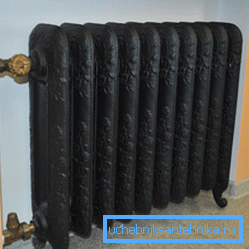
Note! The instruction of specialists in this case sounds like this: the darker the tone, the higher its heat transfer. This physical feature is successfully used in refrigeration radiators - they are always painted black.
Here we must bear in mind that the paint layer should be thin. Only then the heat transfer occurs almost immediately from the batteries to the surrounding space.
Older models of cast iron radiators are archaic in appearance. However, they are still common in our country. This is explained by the fact that the price of new devices is too high for some categories of our citizens.
The main thing here - do not despair. You can deliberately turn batteries into retro-style interior elements. To do this, do not hesitate to outdated devices, on the contrary - to “stick it out”. To do this, they are painted with bronze or silver paint.
Heat transfer devices at the same time will not change, however, radiators fit perfectly into the retro-style room.
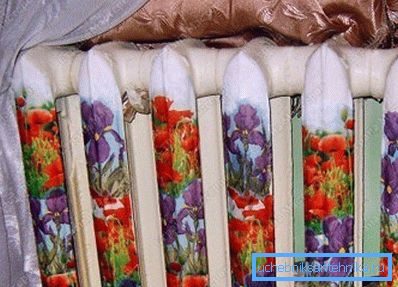
If you are an incorrigible optimist or want to please your children, there is also a “cheerful” painting of radiators and heating pipes.
There are many options here:
- drawings on devices depicting cartoon characters;
- your own "heroes";
- tones and patterns that enhance mood;
- Coloring sections of the battery heating in a variety of colors, such a bright spot will help to diversify the interior of the room.
The choice of coloring composition
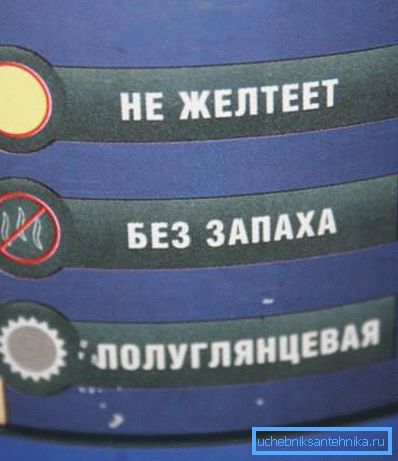
Radiator paint must have certain technical characteristics.
Paint characteristics
- Thermal resistance. The composition must withstand temperatures up to + 100 °.
- Color stability. The coating should not change the tone when operating in high temperature conditions.
- Environmental friendliness. The dye must be harmless.
- The possibility of applying their own hands on heated surfaces. The composition should not react to interaction with the hot device.
Note! Oil enamels are not included in the recommended range of radiator paints. They dry for a long time, do not withstand high temperatures, the thickness of the layer is not optimal and time-consuming to work.
Materials suitable for application to the radiator
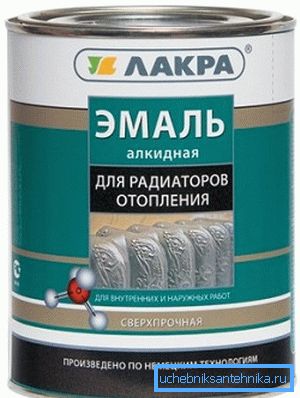
Paint materials most suitable for working with radiators are described in the lower table.
| Paint type | Merits | disadvantages |
| Enamel acrylic | Heat resistant. It has a glossy surface, well washed. | When working emit a sharp smell, so the room should be ventilated. It has low heat transfer. |
| Alkyd enamel | Well lays on heated surfaces (up to 60 degrees), dries quickly. It has good heat resistance. | It also has a pungent smell and requires airing of the room. |
| Glyphthalic paint | High level of moisture and heat resistance. It does not have a sharp smell. | Dries slowly. Lies unevenly. As a result, it is necessary to increase the coating layer, which negatively affects the heat transfer of the battery. |
| Acrylate water dispersion composition | Ease of work. Optimal viscosity - the composition can be applied using a spray gun. | Not all such paints are suitable for use in high temperature conditions. Packaging material must be appropriately labeled. Coverage will be matte only. |
| Heat-resistant enamels for metal, silicon-based (CO label) | Able to withstand very high temperatures (up to 1000 degrees). They do not reduce heat conductivity, they dry out quickly, they do not split and do not change color. | Limited range of colors, high cost. |
Stages of work
First, the radiator must be prepared for operation.
Preliminary actions
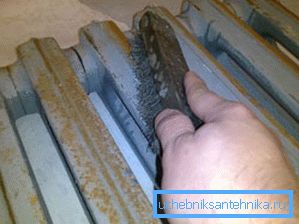
- First of all, the area of heating radiators for painting should be cleared of the old coating. Make it necessary, because This layer will reduce the thermal efficiency of the battery. Remove the old color can be mechanically (brushing the radiator with a scraper or a metal brush) or chemical - using solvents.
Note! If mechanical cleaning is applied, it is best to use an electric drill. It will greatly facilitate the work. If you use a chemical cleaning method, you need to work in a respirator, because the means used are poisonous
- Having treated the battery with a solvent, then it must be tightly covered with a film of polyethylene. This action will allow, after a certain period of time, simply enough to remove the old paint with a spatula.
- It is not necessary to clean the radiator if no peeling and cracks are observed on its surface. In this case, it is enough to sand the device, clean it from dust and dirt. Then the battery must be degreased and proceed to painting.
Coloring device
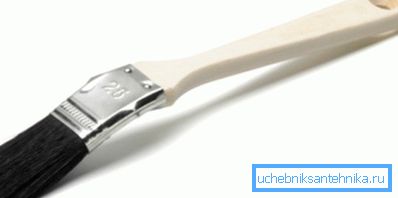
- The main work begins with the protection of floors under the radiator. They should be covered with newspapers or a piece of matter.
- Before that, prepare the necessary tools. The main ones (except in the case of water-based and dispersion paint) are brushes. The first one should be normal, and the second one should be curved, so that it is possible to paint over hard-to-reach areas between sections and from the back of the batteries.
- The painting of the radiators themselves begins with their internal upper surfaces. Work continues on the transition to the external surfaces of devices.
- Do not forget - in this case, the most important factor is not the covering ability of the coating, but its subtlety. The thicker the paint layer is, the less the batteries will give off heat.
Conclusion
Staining batteries not only increases the aesthetics of their appearance. In the course of this work, you can also increase the heat output of the heater. Watch the video in this article, it will increase the baggage of your knowledge.